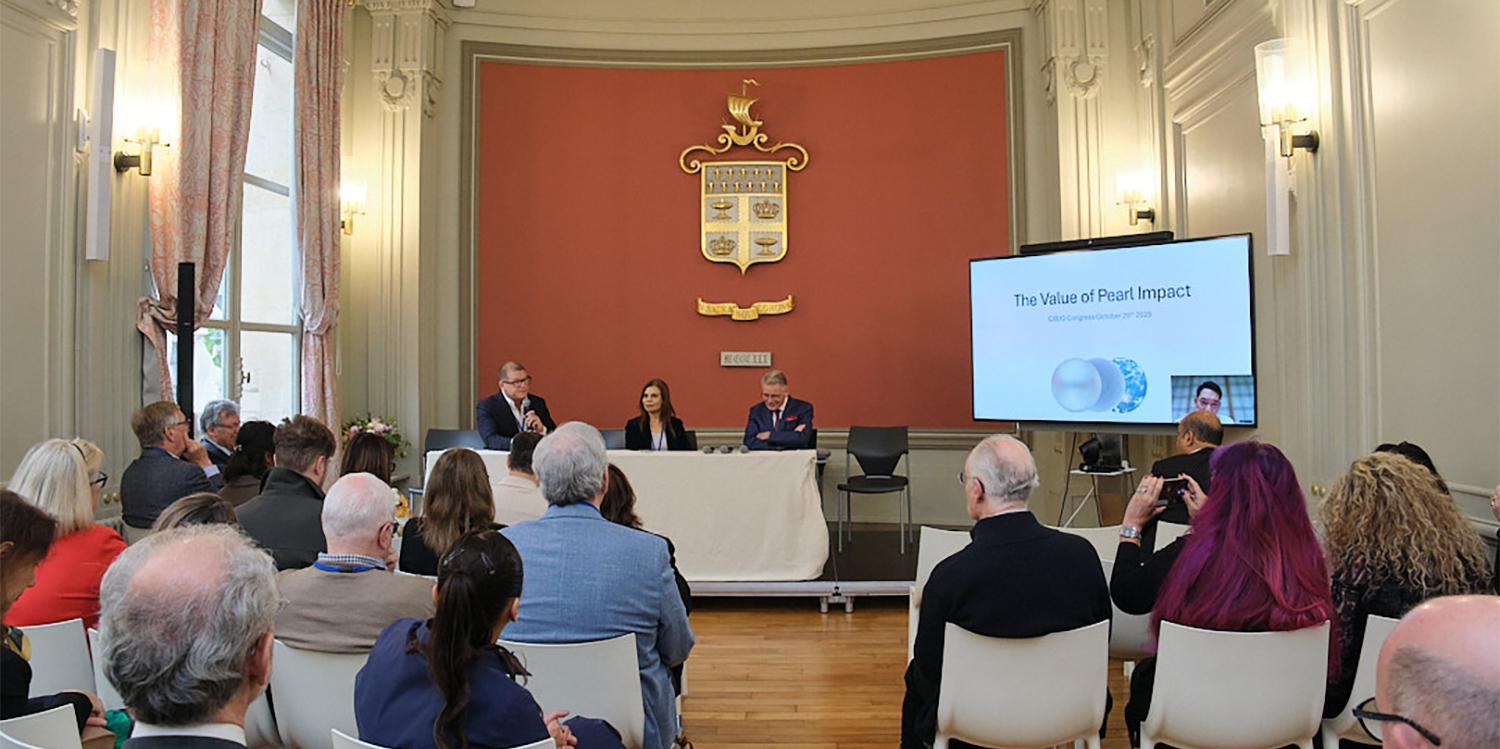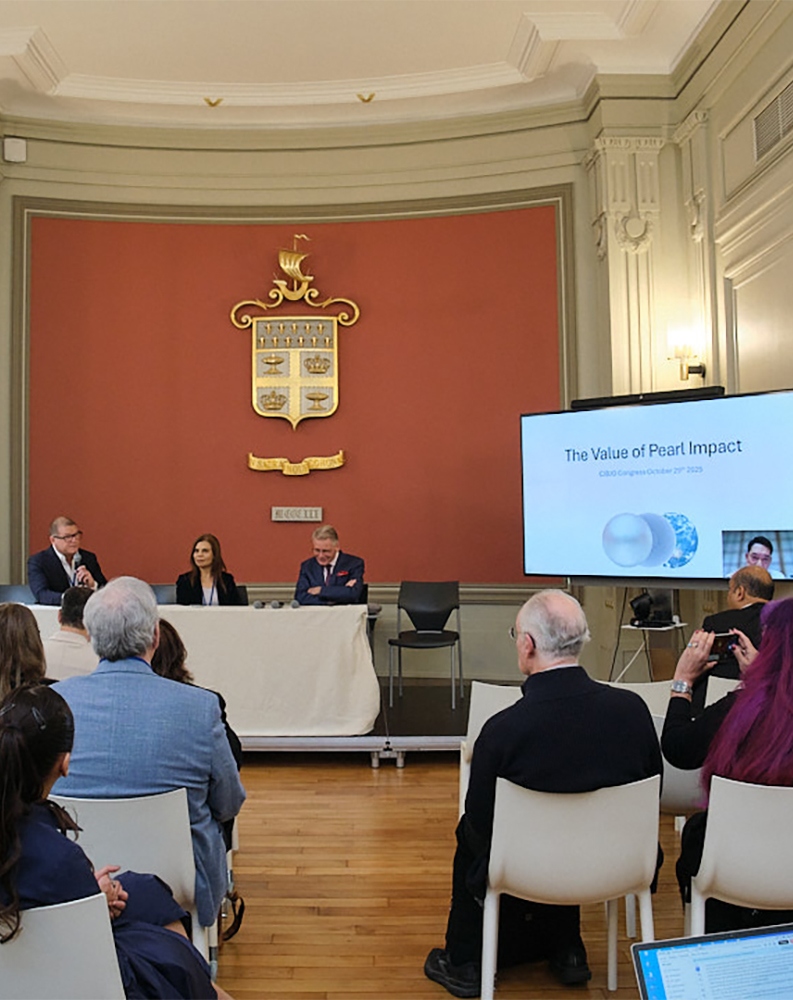Cultured pearl suppliers must protect the marine environment
for future generations, CIBJO Congress hears
The pearl industry as an instrument for proactively supporting the marine environment was the subject of the first session of the third day of the CIBJO Congress, on October 29, in Paris. Seen here on the panel (from left)are Pierre Fallourd of the Sustainable Value Generator, Australia, Noora Jamsheer, CEO, Bahrain Institute for Pearls and Gemstones (DANAT), and Kenneth Scarratt, CIBJO Vice President and President of the Pearl Commission. Speaking virtually and visible in the screen is George Kakuda, President and CEO of Kakuda Pearl, Japan.
OCTOBER 29 2025
Cultured pearl suppliers must protect the marine environment of the pearl beds in order to safeguard productivity for the long term, the CIBJO Congress heard.
“You cannot be involved with this product without looking after the environment in which they grow,” CIBJO Vice President Kenneth Scarratt told a session on the final day of the CIBJO Congress.
Noora Jamsheer, CEO, Bahrain Institute for Pearls and Gemstones (DANAT), told the session that recent environmental tests in the Bahrain pearl beds had shown consistent environmental standards and pearl yields in the marine environment.
Rebecca Koss, sustainable manager at Paspaley Pearling Co, Australia, told the session by video link that the company was conducting a life cycle assessment of its pearls and was monitoring the marine environment of the pearl beds.
The company was developing a sustainability strategy, said Ms Koss, who is a contributor to the CIBJO Pearl Guide which is presently being updated.
George Kakuda, President and CEO of Kakuda Pearl, presented to the CIBJO Congress by video link a profile of cultured pearl farming activities in Japan.
He spoke of a reduced production of cultured pearls in Japan linked to the impact of rising ocean temperatures.
The Japanese cultured pearl farming sector is driving forward several sustainability initiatives, including beach cleaning and steps to reduce carbon dioxide emissions.
“We are attempting to make our actions more visible in the market,” Mr Kakuda said.
Pierre Fallourd of the Sustainable Value Generator, Australia, presenting a study on the impact of pearl farming, told CIBJO that regenerative aquaculture was key to drive forward a sustainable productivity.
Efforts to look after water quality and biodiversity were essential to mitigate the impact of climate change, Mr Fallourd said.
He added that blockchain had been applied to some cultured pearl production creating a more transparent story of the journey of those pearls along the supply chain.
TIER 2 SPONSORS










